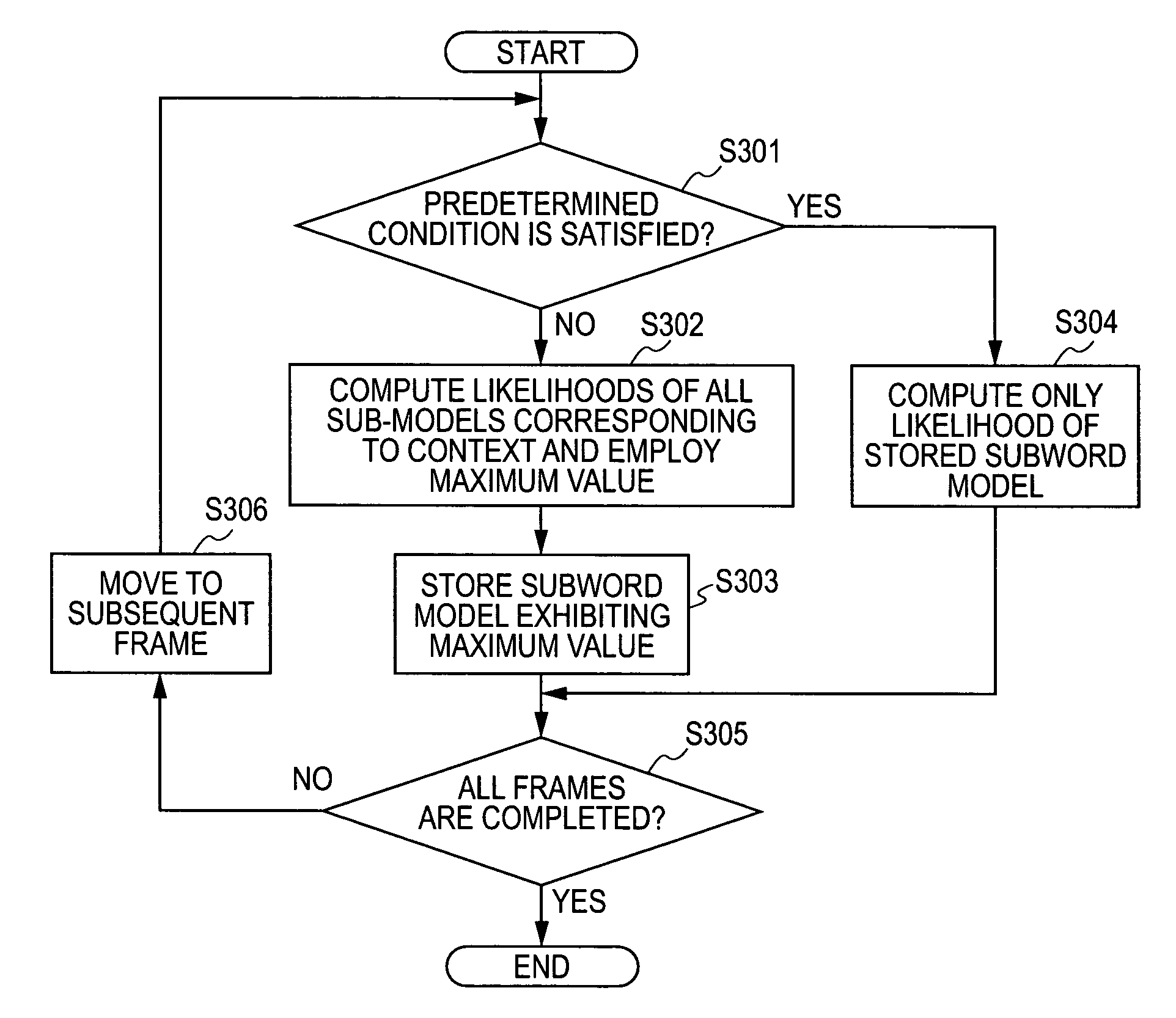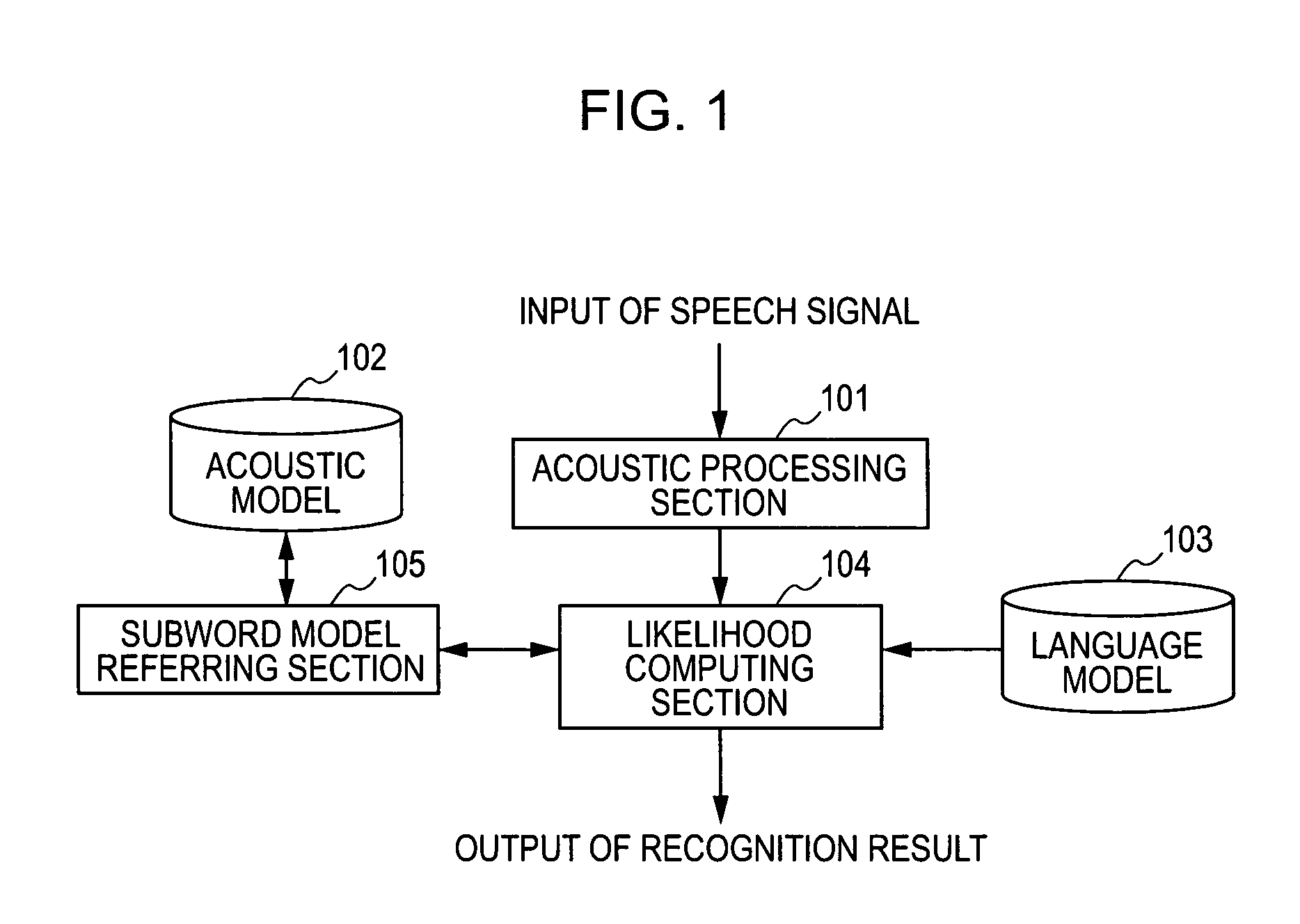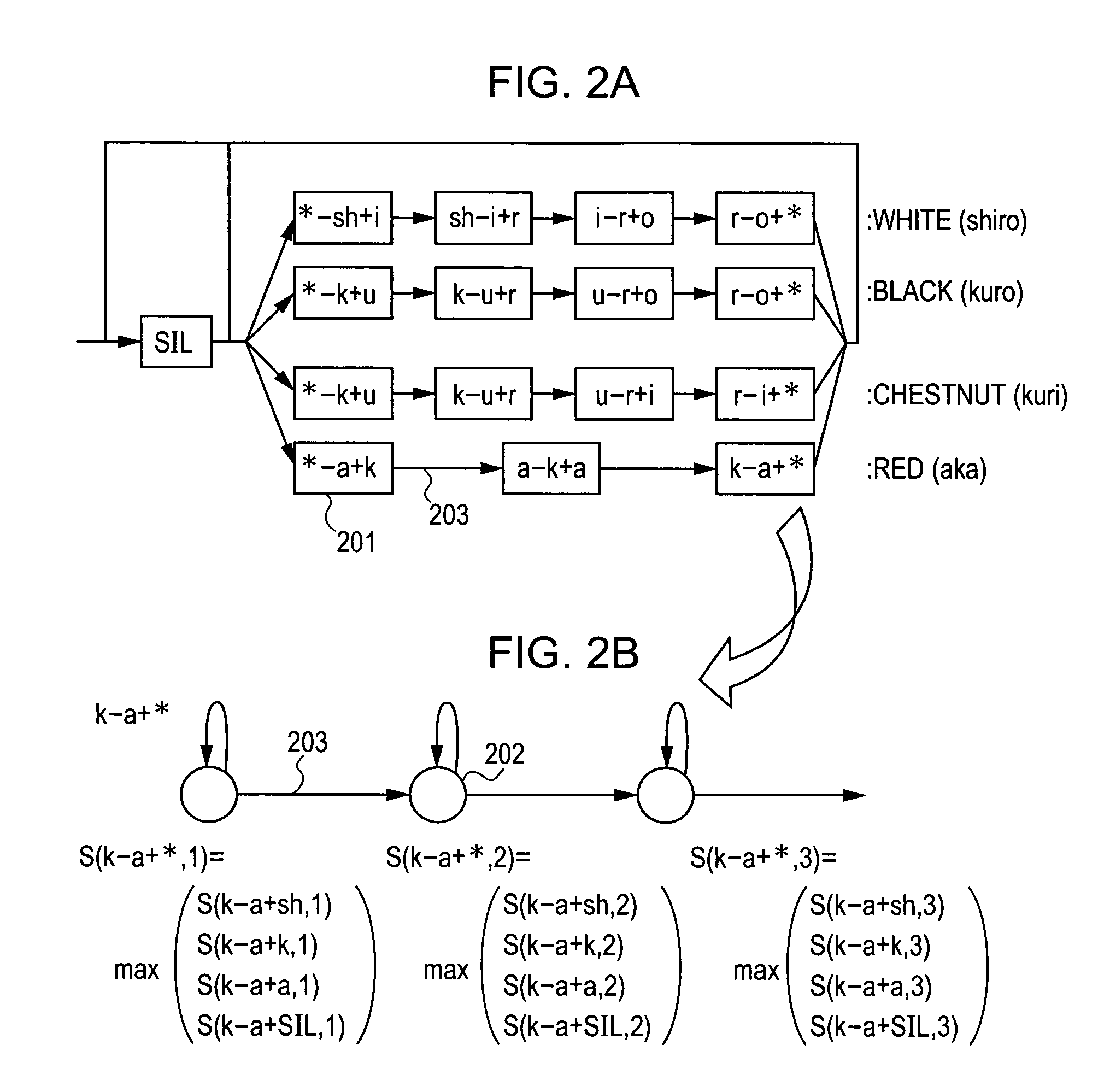Speech recognition method and speech recognition apparatus
- Summary
- Abstract
- Description
- Claims
- Application Information
AI Technical Summary
Benefits of technology
Problems solved by technology
Method used
Image
Examples
first exemplary embodiment
[0023]FIG. 1 is a block diagram illustrating the functional configuration of a speech recognition apparatus according to the first embodiment. The speech recognition apparatus includes a speech / acoustic processing section 101 configured to obtain a speech feature parameter by analyzing an input speech signal; an acoustic model 102 configured to store a subword model in which acoustic features of subwords are modeled through HMM or the like; a language model 103 including recognizable vocabularies, and a grammar or a linkage probability; a likelihood-computing section 104 configured such that, with an input given by the speech feature parameter computed by the speech-processing section 101, on the basis of the acoustic model, the language model hypotheses are generated, and likelihoods of the hypotheses are computed; and a subword-model referring section 105 configured such that, upon likelihood computation performed by the likelihood-computing section 104, at least one subword model...
second exemplary embodiment
[0028] According to the exemplary first embodiment, expansion of hypotheses of subwords corresponding to a plurality of phoneme context is inhibited. According to the present exemplary embodiment, the number of times of computations of likelihood S (a, b) of a subword model, to which the subword-model referring section 105 refers with respect to each hypothesis, is reduced.
[0029]FIG. 3 is a flowchart of the likelihood computation conducted according to the present exemplary embodiment. The following processings are carried out with respect to each hypothesis. A determination is made in step S301 whether a predetermined condition, which will be described below, is satisfied. If the predetermined condition is not satisfied, the process proceeds to step S302. In step S302, likelihoods of all subword models, to which the subword-model referring section 105 referred to, are computed in the same fashion as in the first embodiment, and the maximum value of the computed likelihoods is empl...
third exemplary embodiment
[0033] While the foregoing embodiment is described as an exemplary way of inhabiting hypothesis extension of subwords due to word-to-word linkage at the word boundaries for continuous speech recognition, the present invention is not limited to this and is applicable to a hypothesis even within a word, having a plurality of contexts. FIGS. 4A and 4B illustrate subword series, according to a recognition grammar allowing words “white (shiro)”, “black (kuro)”, “chestnut (kuri)”, and “red (aka)” to be independently recognized, in a tree structure in which subwords are commonly shared by some of the words. In FIG. 4A, subwords which are common to some of the words from the tops thereof according to a known tree structure building method are arranged so as to be commonly shared by the words. More particularly, subwords “SIL−k+u” and “k−u+r” are commonly shared by the words “black (kuro)” and “chestnut (kuri)”. Upon applying the present invention here, as shown in FIG. 4B, by preparing a su...
PUM
 Login to View More
Login to View More Abstract
Description
Claims
Application Information
 Login to View More
Login to View More - R&D
- Intellectual Property
- Life Sciences
- Materials
- Tech Scout
- Unparalleled Data Quality
- Higher Quality Content
- 60% Fewer Hallucinations
Browse by: Latest US Patents, China's latest patents, Technical Efficacy Thesaurus, Application Domain, Technology Topic, Popular Technical Reports.
© 2025 PatSnap. All rights reserved.Legal|Privacy policy|Modern Slavery Act Transparency Statement|Sitemap|About US| Contact US: help@patsnap.com



